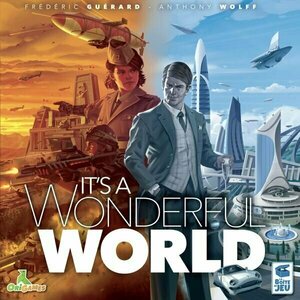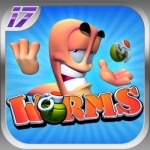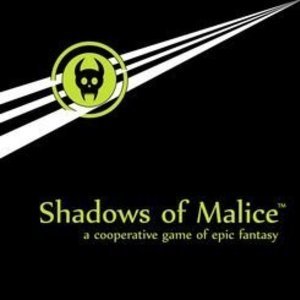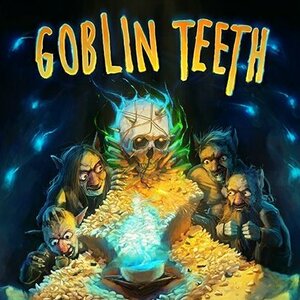Purple Phoenix Games (2266 KP) rated It's a Wonderful World in Tabletop Games
Oct 30, 2021
It’s a Wonderful World is a card drafting, economic, civilization building game with variable player powers (with a dash of campaign mode sprinkled on top). In it, players are attempting to build their civilization faster and better than their competitors. However, for this review, I will be playing the vanilla non-scenario solo mode.
DISCLAIMER: I was able to play this and several other games at The Table in Cookeville, TN. If you are ever in the neighborhood, check them out, and tell Nathaniel that I say hello.
To setup, put together the main board and place the round marker on Round 1. Lay out all the resources on their specific places upon the board and shuffle the deck of cards. Deal out eight stacks of five cards each and place them as mini-decks somewhere on the table. Choose a starting civilization (or just randomly choose one). The solo game is ready to play!
Typically, It’s a Wonderful World is a card drafting game, a la 7 Wonders, where players choose one card from the deck passed to them and pass it along to the next player until all cards have been drafted. In the solo mode, however, the player chooses one of the face-down mini-decks as their starting hand. Upon viewing the cards, the player may choose to place any or all of them in their Construction Area, or discard the cards for their Recycle Bonus (typically a type of resource), and/or discard two card from the mini-deck to draw five cards from the top of the main deck. From these drawn cards, the player may choose one to keep and discard all others. The kept card may be placed into the Construction Area or discarded for its Recycle Bonus resource.
Cards placed in the Construction Area require resources to be earned and placed on them in order to complete its build process. Each round the player will receive resources based on which cards have been built and placed above their starting civ card. Some cards, once completely built, will also offer more VP at game end, or supply a VP modifier.
After the first mini-deck has been played completely, the player will choose a second mini-deck and run through the same process. After this second mini-deck has been completed the round ends and play moves to the next round. Play continues in this fashion until all four rounds have been played (so all eight mini-decks). At game end the player counts up all their VP and compares it to the table in the rulebook to arrive at their final tier. My first game resulted in the rulebook calling me a Rooky. So be prepared to be humiliated by a rulebook.
Components. Aside from being bamboozled by the aggressive artwork on the cover, this is not a wargame. In fact, I very much like the artwork and the styling of this game. The cards are all laid out very well, and the iconography makes sense. The resource cubes are translucent colored (except the grayish white is opaque) and are fine quality. Overall the components are great and the art style has grown on me quite a bit.
I can see why so many people compare this to 7 Wonders. Essentially, the multiplayer game is quite similar. Card drafts (of 7 cards, no less) lead to needing resources in order to build, lead to being able to produce more resources to fuel other cards, and bonus points are awarded for having a nice card profile. Now, this being a solo review, I have to say that I much prefer It’s a Wonderful World to its forefather 7 Wonders because it comes packaged with a solo mode already in the box. This isn’t the only reason I prefer it, though. I find it easier to pick up and easier to teach to beginning gamers. Also, there is no card chaining, which seems to be a difficult concept for newer gamers to grasp initially. It’s a Wonderful World has nothing like this, and cards just work. 7 Wonders has been such a hit with my family, and I know they will greatly appreciate a more streamlined game experience with this one.
So here’s my recommendation with this one. If you are a fan of 7 Wonders but find it to be difficult to get others into it, check out It’s a Wonderful World. I feel that it is superior in many ways, and the solo mode is just icing. The solo mode gives me a great play experience, even though I typically am not a fan of games challenging you to beat your own high score. I will live with it here because the game is just so enjoyable. While 7 Wonders was my favorite game of all time for quite a while, it has since dropped out of my Top 10, and I think will be replaced entirely by It’s a Wonderful World. If your tastes are similar to mine, then do yourself a big favor and grab a copy of this one right away. It has several expansions out there, and I believe you will fall in love with drafting again. Now, where did I put my Wind Turbines…
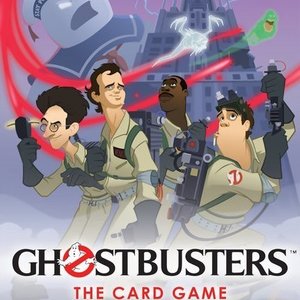
Ghostbusters: The Card Game
Tabletop Game
Who you gonna call? Compete against friends and family in Ghostbusters: The Card Game to collect...
Paul Kellett (118 KP) rated Shadows of Malice in Tabletop Games
May 8, 2019
Instead, you get plain cards with simple line art and either just an icon/dice modifier or a short line of text explaining the effect. These cards are items of armour, weapons or other loot, potions, skill masteries, fate effects or abilities. A selection of these make up your character. Again, there are no defined heroes, you can be whatever you fancy being.
When you encounter a monster you roll 3d6 against a chart which will define the creature's species and its strength. Creature types are things like "Avian" and "Reptilian" so you can imagine fighting a dinosaur, a giant eagle or whatever fantastic creature you desire.
This makes the game a great framework to roleplay in. You are never stuck encountering the same things again and again. On the minus side, if you don't have a good imagination, it boils down to just rolling dice and beating target numbers. If you want a game to give you a story to follow, SoM is not that game.
The rules are good, if a little heavy but after a game or two it should soon click and it's mostly straight forward. The designer has recently just uploaded a revised rulebook to BGG which streamlines a number of things.
SoM comes with 4 large landscape hex tiles plus a shadow realm tile and you can choose any number of tiles to arrange in any position around the shadow realm tile. Each tile is divided into a number of smaller hexes with varying terrain and locations printed on them. This is the world you will be exploring and, despite being tiny compared to other game boards, each tile adds about an hour to the play time.
Gameplay involves exploring the land fighting creatures, gaining loot, visiting cities to trade goods or mystic seers to buy potions while searching for the special light wells that you must take control of.
In between player turns, the shadows act. They begin confined to the shadow realm but as the rounds progress, barriers fall and the shadows are more likely to find a way out to manifest in the land. Once there they start searching for the light wells and it's game over if they get to them first .
This makes for a tense cat and mouse with your heroes racing to either get to a well or intercept the demons on route.
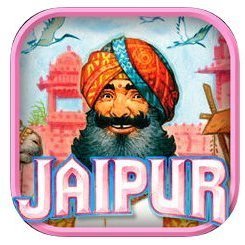
Jaipur
Games
App
A Spiel des Jahres Recommended game, Jaipur is one of the most most well-loved 2-player tabletop...
Boardgames BoardgameApps Greatgames 2playerGames
Purple Phoenix Games (2266 KP) rated Goblin Teeth in Tabletop Games
Nov 5, 2019
Goblin Teeth is a fantasy take-that, auction, set collection, dice and card game. Each player is a goblin attempting to impress the goblin boss enough to become the right hand gobbie by offering a collection of items that the boss enjoys.
DISCLAIMER: We were provided a prototype copy of this game for the purposes of this review. As this is a preview copy of the game, I do not know if the final rules or components will be similar or different to what we were provided. -T
To setup, create the offering mat by randomly drawing a red and blue offering card to be placed in their respective locations. Shuffle the Cheat cards and Item cards into separate decks. Each goblin player chooses a set of three matching dice they will use throughout the game. Give each goblin one Cheat card to begin their collection. From the Item cards, place as many Items face-up as the number of players and one more face-down at the end of the row near where the sacrifice altar will be placed. You now have your offer row for the first round and are ready to play.
Before the round begins, all players will roll all three of their dice simultaneously. These dice represent your bid amounts for the Item cards on display (including the face-down Item). Whomever is in possession of the first-player marker will take their turn first. This goblin may choose to play any number of Cheat cards in their hand, and then must place a die on an Item card or into the altar. These Item cards feature items to be collected and used to satisfy an Offering card – like skulls, goblin teeth, glow worms, and others. By placing a die on an Item card, a goblin is casting their bid. By placing a die into the sacrificing altar, the goblin is instead giving up a bid die in exchange for drawing a Cheat card (which can be very powerful). Once the die is placed, the next goblin in clockwise order can take their turn following the same order of operations. The goblin who wins the face-down Item card becomes the new first player and receives the first player token. A new round can now begin by laying out new Items and rolling all dice simultaneously.
The game continues in this fashion until one sneaky goblin has all the Items they need to satisfy one of the Offering cards (or the pre-printed space on the Offering mat). There are dice placement rules and Cheats-a-plenty that I did not describe at all, but per the disclaimer, you can back the game or purchase from your favorite board game retailer (naturally, your FLGS). All goblins then tear each other to shreds over jealousy and greed. Ok, I added that last bit myself, but it should go into the rules. Just sayin’.
Components. Again, this is a prototype version of the game and some components may (and probably will) change over the course of a successful Kickstarter campaign. That said, I will comment on what I can here. The physical components themselves are fine for a prototype game. The cards are big tarot cards that are fun to handle. I hope they keep that size. The first player token in this is a green translucent plastic meeple that I’m sure they will be upgrading during the campaign. Similarly, the dice will more than likely see an upgrade (I am totally projecting here, I have no information on any future plans for components). What needs very little upgrading is the art on the cards. The card backs for the Cheat and Item cards feature an excellent logo (I hope) for the game, and the art on the Item cards are clear and really really good. I hope the art style doesn’t change as the art is amazing here. The Cheat cards look good, are clear, and although they feature several different fonts, I was not at all ever turned off by the presentation.
So here are my thoughts. Goblin Teeth is an excellent game of outbidding your opponents, double-think, and Cheating your way to victory! I absolutely adore this game. Without those Cheat cards it would still be decent, but those Cheats are what make this game special. Being able to play as many Cheat cards as you want on your turn, with some of them being good and some bad, but being able to place them on yourself or your opponents is just gold. I cannot wait to see this game go to Kickstarter and just kill it. Seriously, it’s an amusing, frustrating, beautiful game that I cannot wait to own in its full glory. If you enjoy experiences that pit you against your opponents and you find yourself giggling at thwarting their plans, this is the game for you.

BAND - Organize your groups
Social Networking and Productivity
App
Organize your group on BAND! It’s the perfect group communication app with features like Community...
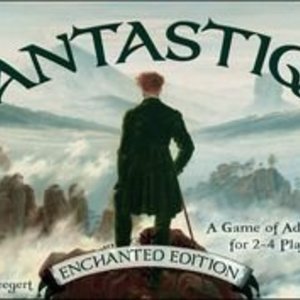
Fantastiqa
Tabletop Game
Welcome to the wild, weird world of FANTASTIQA! Fantastiqa is a deck-building board game set in a...
Margaret A. Young (1 KP) rated Bears vs Babies in Tabletop Games
Nov 3, 2018 (Updated Nov 3, 2018)
We bought Bears vs. Babies because my sons loved Exploding Kittens which was created by the same people. While being a completely different game, I think this would appeal to anyone who enjoyed Exploding Kittens.
Bears vs Babies comes packaged in a sturdy box which is covered with fake fur. Although this is attractive, we bought a separate case for travel as the box it comes in is a bit bulky for camping and scouting trips, does not lock closed and the fur would get dirty quite easily. However, if you simply want it to keep it on a shelf it is fine, and the unique box does seem nice for a gift item.
Inside the box is the deck of cards, a rule book, another book of frequently asked questions, which I fact contains more rules, and a cloth playing mat. The frequently asked questions book says that you don't need to read it, but you really do. It shouldn't take more than a couple of minutes to read both, so do yourself a favour and have a quick read before starting the game.
This game has been played by my sons and their friends, ranging in ages from 8 - 13. This game is recommended for ages 10+, but I think it could be played with children as young as six with minor assistance, and my youngest was 9 when we got this.
Although the game is called Bears vs Babies, there is really only one bear unless you count a water bear, which isn't a bear at all. I think Beasts vs Babies would be a more accurate name. Some of the beasts you can make include a Grizzly Bear, a Llama, a Velociraptor, a Manatee and an undead looking rabbit. Or at least you can create creatures which look like a sin against nature with these heads. You collect and play other cards to add a body, legs, arms and accessories to your monsters, trying to get as many points as possible. The monsters are pitted against babies whose also look like abominations, though this is clearly intentional.
Game play is pretty simple. You are allowed to actions per turn. So you can add parts to your monsters, play an action card, draw cards or provoke babies. Babies and monsters are divided into three categories, land, sea and air. When a baby is provoked, all the babies of that category attack all monsters of the same category on the table. The one with the most points wins.
As with any game, we add a few personal twists to it. Instead of just calling provoke to start a battle with babies, you can make each player come up with a unique way to provoke them... energy drink in the baby bottles, hide their teddy bears, and so on. Adding sound effects for the winning monster can add to the fun as well.
While I wouldn't say this is game that can keep children or teens entertained for hours, it is something that is chosen regularly, by both my own children and visitors. A round of the game can take perhaps 20 minutes and this is usually played once in a session before moving on to another game. To be fair, the boys do say they prefer Exploding Kittens, And Exploding Kittens does get played more frequently, but this is still a very welcome addition to our games collection and I am well pleased with our purchase.

Bitsboard - Education, Games, and Flash Cards App
Education and Games
App
- Top 5 Education Game in the US App Store - Study almost anything for free across 25 addictive...
